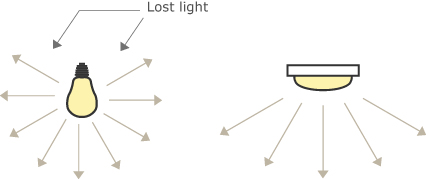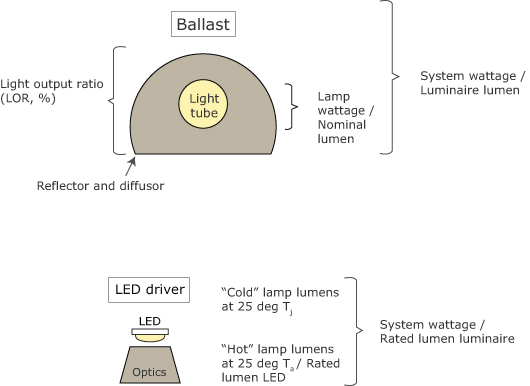LED and Energy Efficiently
One of the advantages of LED is that all the light is emitted in one direction. This entails fewer reflections inside the luminaire since we normally want the light to go downward only. If we need a light distribution that goes both up and down, the LED is less suitable compared to e.g. a T5 fluorescent lamp.

Conventional lightsources cast a lot of light backwards, which may be lost in the optics design of a luminaire. The LED, on the other hand, emits all light in one direction.
The performance of LED is often measured in terms of lumens per watt or efficacy. With luminaires with fluorescent tubes, the efficiency is explained using the LOR or Light Output Ratio. The LOR would measure how efficient the optics are. For these luminaires, the installed power in watt is often used as a measure on the luminaire’s light output. LED luminaires, however, usually use the rated luminaire lumen to determine the luminaire’s light output.
The rated lumen value from an LED module may give an inaccurate picture of how many lumen you actually get from the luminaire. When documenting an LED luminaire, Luxo always lists the lumen value out of the luminaire, the so called rated lumen, luminaire. When you compare this lumen output with a T5 luminaire you must take the rated lumen from the T5 lamps and multiply with the Light Output Ratio (LOR) of the luminaire (see figure).

One should pay special attention to the difference between rated lumen, luminaire and rated lumen, lamp, which is measured on the LED module. Previously, LED manufacturers listed the lumen output at a junction temperature of 25 degrees, or so-called cold lumens. The junction temperature is measured inside the diode itself. Today, a more common denomination is to use hot lumens, i.e. lumens measured at an ambient temperature of 25 degrees, which correspond to a much higher junction temperature.